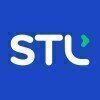Project Manager Scrum Master
30+ Project Manager Scrum Master Interview Questions and Answers

Asked in Birlasoft

Q. What is agile? How you trained your team for agile development? What action item came out of sprint retro and how you handled? What techniques you follow in estimation? Who are stake holders of PI planning?
Agile is a project management methodology focused on iterative development and collaboration.
Agile is a project management methodology that emphasizes iterative development, collaboration, and flexibility.
Trained team for agile development by conducting workshops, providing resources, and coaching on agile principles and practices.
Action items from sprint retrospectives are discussed with the team, prioritized, and assigned to team members for implementation.
Estimation techni...read more

Asked in Niveus Solutions (Part of NTT Data)

Q. What are the stages of project management?
The stages of project management include initiation, planning, execution, monitoring and control, and closure.
Initiation: Defining the project's objectives, scope, and stakeholders.
Planning: Developing a detailed project plan, including tasks, resources, and timelines.
Execution: Carrying out the project plan, managing resources, and completing tasks.
Monitoring and Control: Tracking project progress, identifying and addressing issues, and ensuring adherence to the plan.
Closure...read more

Asked in TCS

Q. Can you describe the end-to-end process you follow after receiving requirements from the Product Owner?
I follow a structured process to ensure requirements are effectively translated into actionable tasks for the team.
1. Requirement Analysis: Review and clarify requirements with the Product Owner to ensure understanding.
2. Backlog Refinement: Prioritize and break down requirements into user stories and tasks in the product backlog.
3. Sprint Planning: Collaborate with the team to estimate tasks and plan the sprint based on priority and team capacity.
4. Daily Stand-ups: Facilita...read more

Asked in TCS

Q. How do you ensure that the quality of the Sprint demo is maintained?
Maintaining quality in Sprint demos involves preparation, stakeholder engagement, and continuous feedback.
Conduct thorough sprint reviews to ensure all features are demoed effectively.
Engage stakeholders early to gather feedback and adjust the demo accordingly.
Use real user scenarios during the demo to showcase functionality.
Prepare a clear agenda and objectives for the demo to keep it focused.
Incorporate feedback from previous demos to improve future presentations.

Asked in TCS

Q. What is the process you follow during your PI (Program Increment) planning?
During PI planning, I facilitate collaboration, align teams, and prioritize work for the upcoming increment.
Preparation: Gather input from stakeholders and teams to define objectives and features.
Team Breakouts: Facilitate sessions where teams estimate and plan their work for the increment.
Dependency Management: Identify and address dependencies between teams to ensure smooth execution.
Review and Adjust: Present plans to stakeholders for feedback and make necessary adjustment...read more

Asked in Mphasis

Q. Can you handle 3 teams? How do you overcome silos?
Yes, I can handle 3 teams and overcome silos through effective communication and collaboration.
Establish regular meetings with all teams to ensure alignment and identify any potential issues
Encourage cross-functional collaboration and knowledge sharing
Implement a shared project management tool to track progress and ensure transparency
Celebrate team successes together to foster a sense of unity
Address any conflicts or misunderstandings promptly and openly
Project Manager Scrum Master Jobs



Asked in EXL Service

Q. What actions do you take to address a delayed delivery?
To address delayed delivery, I assess the situation, communicate with stakeholders, and implement corrective actions promptly.
Assess the Situation: Analyze the root cause of the delay, whether it's due to resource constraints, scope changes, or unforeseen challenges.
Communicate with Stakeholders: Keep all relevant parties informed about the delay, its impact, and the steps being taken to mitigate it.
Prioritize Tasks: Re-evaluate the project backlog and prioritize critical tas...read more

Asked in Mphasis

Q. What steps do you take to increase velocity?
To increase velocity, I focus on improving team communication, removing impediments, and continuously refining our processes.
Encourage open communication and collaboration within the team
Identify and remove any obstacles or impediments that are slowing down progress
Regularly review and refine our processes to optimize efficiency
Ensure that the team is properly trained and equipped with the necessary tools and resources
Encourage a culture of continuous improvement and learning
Share interview questions and help millions of jobseekers 🌟


Asked in Niveus Solutions (Part of NTT Data)

Q. What is Scrum? Explain its values and principles.
Scrum is an Agile framework for managing and completing complex projects.
Scrum values include commitment, courage, focus, openness, and respect.
Scrum principles include empirical process control, self-organization, collaboration, value-based prioritization, and time-boxing.
Scrum involves a team working in short iterations called sprints, with a focus on delivering a potentially shippable product increment at the end of each sprint.
Scrum also includes roles such as Product Own...read more

Asked in Mphasis

Q. Why is a Scrum Master needed in Scrum?
Scrum master is needed to facilitate the Scrum process and ensure the team follows the framework.
Scrum master acts as a servant leader for the team
They facilitate Scrum events such as daily stand-ups, sprint planning, and retrospectives
They remove impediments and ensure the team has the necessary resources
They help the team to continuously improve and follow the Scrum framework
Examples of Scrum masters include coaches, mentors, and facilitators

Asked in Niveus Solutions (Part of NTT Data)

Q. What are different project methodologies?
Different project methodologies include Waterfall, Agile, Scrum, Lean, and Kanban.
Waterfall: sequential approach with distinct phases
Agile: iterative approach with continuous feedback
Scrum: framework for Agile development with specific roles and ceremonies
Lean: focuses on reducing waste and maximizing value
Kanban: visual system for managing work and limiting work in progress

Asked in Mphasis

Q. Client round - difference between kanban and lean
Kanban is a visual tool for managing work while Lean is a philosophy for continuous improvement.
Kanban focuses on visualizing work and limiting work in progress
Lean focuses on eliminating waste and improving processes
Kanban is a tool used within the Lean methodology
Kanban is often used in software development while Lean is used in various industries
Kanban is more flexible while Lean is more structured

Asked in Telstra

Q. What project management tools are you currently using?
The current PM tool usage varies depending on the organization and project needs.
Some popular PM tools include Jira, Trello, Asana, and Microsoft Project
Agile teams often use Scrum-specific tools like Scrumwise or SprintGround
Some organizations may use custom-built PM tools or a combination of different tools
Cloud-based PM tools are becoming increasingly popular for remote teams
PM tools may also vary depending on the industry or project type

Asked in LTIMindtree

Q. What were the domains of your previous projects?
Earlier project domains included software development, construction, healthcare, finance, and education.
Software development
Construction
Healthcare
Finance
Education

Asked in LTIMindtree

Q. Which tool do you use for sprints?
Jira is commonly used for managing sprints in Scrum.
Jira is a popular project management tool used for organizing sprints in Scrum.
It allows teams to create and track user stories, tasks, and sprints.
Jira provides a visual representation of the sprint progress through boards and burndown charts.

Asked in LTIMindtree

Q. What different metrics do you use to analyze team progress?
Various metrics can be used to analyze team progress in a Scrum project.
Velocity: Measure of the amount of work completed in a sprint.
Burn-down Chart: Visual representation of work remaining versus time.
Cycle Time: Time taken to complete a user story from start to finish.
Lead Time: Time taken from the start of a user story to its delivery.
Sprint Burndown: Tracking the completion of planned work during a sprint.
Defect Density: Number of defects found per unit of work completed...read more

Asked in Muthoot Finance

Q. What is risk mitigation?
Risk mitigation is the process of identifying, assessing, and reducing risks to an acceptable level.
Identify potential risks
Assess the likelihood and impact of each risk
Develop a plan to reduce or eliminate the risk
Implement the plan
Monitor and review the effectiveness of the plan

Asked in EXL Service

Q. How would you manage risks in a project?
Effective risk management in projects involves identifying, assessing, and mitigating potential risks throughout the project lifecycle.
Risk Identification: Conduct brainstorming sessions with the team to identify potential risks, such as resource shortages or technology failures.
Risk Assessment: Evaluate the likelihood and impact of each risk using a risk matrix, prioritizing them based on their severity.
Risk Mitigation: Develop strategies to minimize risks, such as creating ...read more

Asked in Capgemini

Q. What are scrum rituals?
Scrum rituals are regular meetings held during a sprint to facilitate communication and collaboration within the team.
Sprint Planning
Daily Scrum
Sprint Review
Sprint Retrospective

Asked in Mphasis

Q. Experience & expectations as per expertise
I have over 5 years of experience as a Project Manager and Scrum Master, with expertise in leading cross-functional teams and implementing Agile methodologies.
Led multiple successful projects from initiation to completion
Facilitated daily stand-up meetings and sprint planning sessions
Implemented Agile best practices to improve team efficiency and productivity
Collaborated with stakeholders to prioritize project requirements and deliverables

Asked in Morningstar

Q. Biggest achievements as Scrum Master
Successfully led a team to deliver a complex project ahead of schedule
Implemented Scrum framework and facilitated daily stand-up meetings, sprint planning, and retrospectives
Identified and resolved team conflicts, resulting in improved collaboration and productivity
Introduced Agile practices to stakeholders, resulting in increased transparency and better alignment with business goals

Asked in LTIMindtree

Q. How many SOWs have you handled?
I have handled multiple Statements of Work (SOWs) across various projects, ensuring clarity and alignment with project goals.
Managed over 10 SOWs in my previous role, focusing on software development projects.
Each SOW included detailed project scope, timelines, and deliverables.
Collaborated with stakeholders to refine SOWs, ensuring all requirements were captured.
Utilized SOWs to track project progress and manage changes effectively.

Asked in LTIMindtree

Q. What was the team size?
The team size varied based on project needs, typically ranging from 5 to 9 members for optimal collaboration and efficiency.
A smaller team of 5-7 members fosters better communication and quicker decision-making.
For larger projects, we scaled up to 9 members, ensuring diverse skill sets were represented.
In one project, we had a cross-functional team of 8, including developers, QA, and a UX designer.
Maintaining a team size of 7 allowed us to adhere to Scrum principles effective...read more

Asked in IBM

Q. What are EPICs and stories?
EPIC is a large body of work that can be broken down into smaller, more manageable pieces called stories.
EPIC is a high-level requirement that is too large to be completed in a single iteration.
Stories are smaller, more detailed requirements that can be completed within a single iteration.
EPICs are typically broken down into stories during the backlog grooming process.
Stories are usually written from the perspective of an end user to ensure they deliver value.
Example: EPIC - ...read more

Asked in Sterlite Technologies

Q. Explain the scrum ceremonies.
Scrum ceremonies are regular meetings held during a sprint to facilitate communication and collaboration within the team.
Sprint Planning: Plan the work to be done in the upcoming sprint
Daily Scrum: Daily stand-up meeting to discuss progress and plan for the day
Sprint Review: Review the work completed during the sprint and gather feedback
Sprint Retrospective: Reflect on the sprint and identify areas for improvement
Backlog Refinement: Refine and prioritize the product backlog

Asked in Cognizant

Q. Describe a scenario where you had to resolve a conflict within a Scrum team.
As a Scrum Master, I facilitate team dynamics, remove impediments, and ensure adherence to Scrum principles.
Encourage open communication: Foster an environment where team members feel safe to share ideas and concerns.
Facilitate Scrum ceremonies: Ensure daily stand-ups, sprint planning, and retrospectives are productive and focused.
Remove impediments: Actively identify and address obstacles that hinder the team's progress, such as resource shortages or external dependencies.
Pr...read more

Asked in Zensar Technologies

Q. What are your roles as a scrum master?
Scrum Master is responsible for facilitating the Scrum process and ensuring the team adheres to Scrum values, practices, and rules.
Facilitates Scrum events such as Sprint Planning, Daily Scrum, Sprint Review, and Sprint Retrospective
Removes impediments that prevent the team from achieving their goals
Coaches the team on Agile and Scrum principles
Helps the team to continuously improve their processes and practices
Acts as a servant leader to the team
Ensures the team follows Scru...read more

Asked in Black Knight

Q. Scrum ceremony n roles
Scrum ceremonies include Sprint Planning, Daily Scrum, Sprint Review, and Sprint Retrospective. Roles include Product Owner, Scrum Master, and Development Team.
Sprint Planning - plan the work to be done in the upcoming sprint
Daily Scrum - daily meeting to discuss progress and plan for the day
Sprint Review - review the work completed in the sprint and plan for the next sprint
Sprint Retrospective - reflect on the sprint and identify areas for improvement
Product Owner - responsi...read more

Asked in Cognizant

Q. What are the artifacts of the Scrum process?
Artifacts of Scrum process include product backlog, sprint backlog, and increment.
Product backlog: List of all desired work on the project
Sprint backlog: List of tasks to be completed during the sprint
Increment: The sum of all the product backlog items completed during a sprint
Asked in Crystal Power

Q. What is the purpose of a Sprint Review?
Sprint review is to inspect the increment and adapt the product backlog if needed.
Demonstrate the work completed during the sprint
Collect feedback from stakeholders
Update the product backlog based on feedback
Discuss what went well and what could be improved
Plan the next steps for the project
Interview Experiences of Popular Companies





Top Interview Questions for Project Manager Scrum Master Related Skills

Calculate your in-hand salary
Confused about how your in-hand salary is calculated? Enter your annual salary (CTC) and get your in-hand salary


Reviews
Interviews
Salaries
Users










